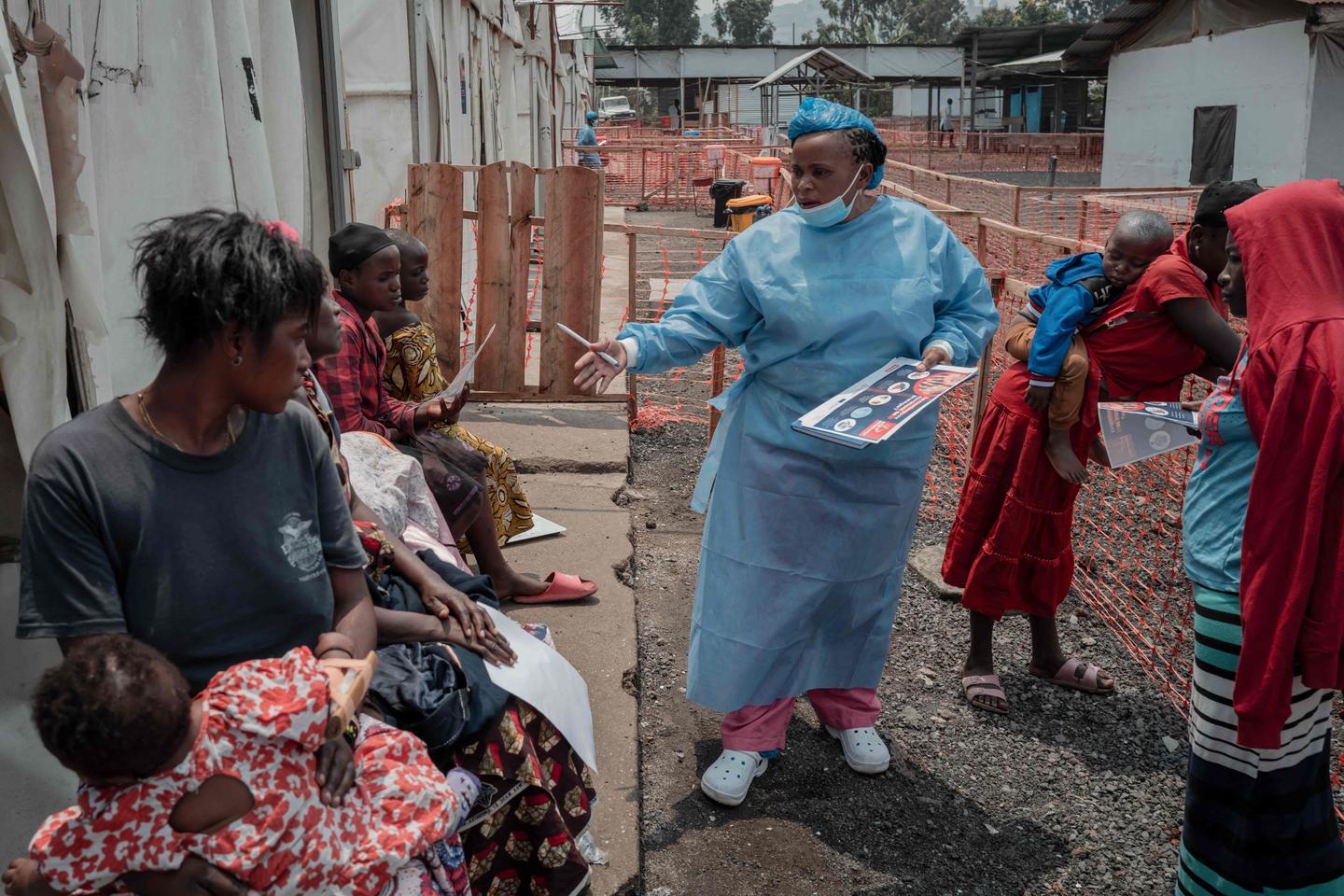A health worker educates patients upon arrival at the Mpox treatment center at Nyiragongo hospital in Goma, Democratic Republic of Congo, August 16, 2024. GUERCHOM NDEBO/AFP
What are the risks of mpox spreading again in the world, two years after the epidemic that caused the death of 140 people and some 90,000 cases in more than 75 countries? The question is beginning to take hold among experts, as the World Health Organization (WHO) declared, on Wednesday, August 14, that the ongoing mpox epidemic in the Democratic Republic of Congo (DRC) and in more than a dozen other African countries constitutes a public health emergency of international concern (PHEIC), the highest level of alert of the UN organization.
These concerns are fueled by the fact that the epidemic that has been ongoing in the DRC for two years has exploded since the beginning of the year and that a new clade, that is to say a new viral strain, began to circulate in September 2023 in the east of the country, recently spreading to several neighboring countries that had never encountered the virus on their territory.
On Thursday, a case of this new, more virulent clade 1b was identified for the first time outside Africa: a person living in the Stockholm region of Sweden was diagnosed after returning from Africa. “It is likely that further imported cases of clade 1 will be recorded in the European region in the coming days and weeks”the WHO’s European branch commented on Thursday.
For its part, the European Centre for Disease Prevention and Control raised its risk level on Friday and called on European countries to “prepare for more imported cases of clade 1”notably “because of the close links between Europe and Africa”.
The first victims are children
But the alarm has also been sounded outside Europe. On Friday, Pakistan announced that it had identified a first case of MPOX on its territory in a traveler returning from a Gulf country. The clade involved was not yet known.
So, are we about to relive the scenario of the 2022 epidemic? For Xavier Lescure, an infectious disease specialist at Bichat Hospital, “2022 was the test run for a zoonosis [une maladie passée de l’animal à l’humain] linked to environmental disturbances produced by man”. According to him, “We will have more difficulty in containing the viral circulation than in 2022 because its spread comes from a wider area and is not limited to a particular population; all with a more virulent clade”.
Read also | Mpox: DRC will urgently approve two vaccines and a treatment to stem the epidemic
Add to your selections
Let’s go back two years. The epidemic outbreak that occurred outside Africa was carried by clade 2b, a variant of the clade circulating in West Africa, known to be less lethal than clade 1, which dominates in the Congo Basin, in the center of the continent. As a result, despite the strong spread in Europe and the Americas, the case fatality rate remained below 1%. The disease had spread from a single case of an infected person returning from Nigeria and had mainly circulated among men who have sex with men (MSM), a community that had been very aware of sexual health issues since the AIDS pandemic, and who had managed to mobilize quickly to limit contamination.


